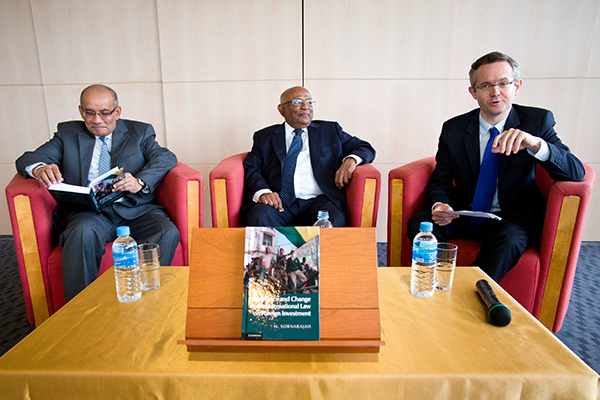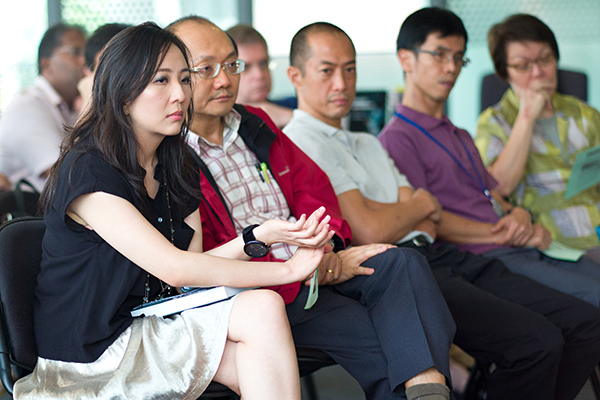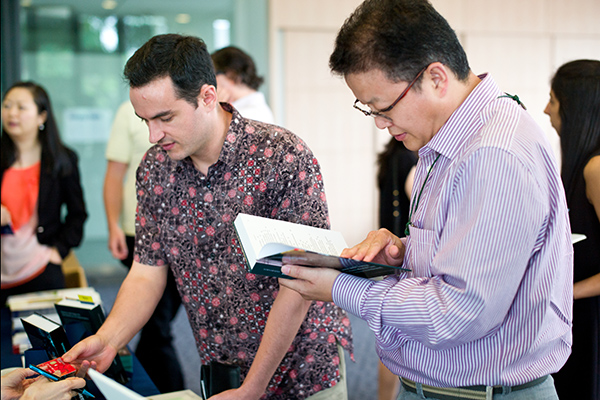Media - News
- Media
- Book Launch: Resistance and Change in the International Law on Foreign Investment
Book Launch: Resistance and Change in the International Law on Foreign Investment

NUS Law congratulates Professor M. Sornarajah on his latest book, Resistance and Change in the International Law on Foreign Investment! Guests from the NUS Law community gathered on 29 April at the NUS Law Bukit Timah Campus for the book launch.
Professor Sornarajah shared his inspiration and insights of the book, after Professor Simon
Chesterman gave an introduction at the start of the launch. Visiting Professor Tony Anghie
shared his friendship journey with Professor Sornarajah with the guests and his modest view
on the book, sprinkled with jokes and humour. The Dean of Faculty of Law, Professor
Chesterman, presented a poster with the guests’ penned congratulatory notes to Professor
Sornarajah in commemoration of the launch. Professor Sornarajah also thanked the
institution by giving the Faculty a signed copy of his book.
Professor Sornarajah shared that he is a fortunate man, given every support by his family,
friends, students and colleagues. He wrote the book for Thanga, who has shared so much of
life with him.

Professor M. Sornarajah has published various books in the area of commercial arbitration, and is considered a leading academic in his area of expertise. He currently holds the position of CJ Koh Professor at NUS Law, and is Visiting Professor at the Centre for Human Rights, London School of Economics.
Published by Cambridge University Press, Professor M. Sornarajah’s book explores the conflicts that emerged within international law on foreign investment which have been increasing as a result of several competing interests. The neoliberal philosophy ensures inflexible investment protection given by a network of investment treaties interpreted in an expansive manner, which led to states creating regulatory space over foreign investment.
However, NGOs committed to single causes such as human rights and the environment protested against inflexible investment protection. The rise to prominence of arguments against the fragmentation of international law also affected the development of investment law as an autonomous regime. These factors have resulted in some states renouncing the system of arbitration and other states creating new treaties which undermine inflexible investment protection. The treaty-based system of investment protection has therefore become tenuous, and change has become inevitable.
Emphasising the changes resulting from resistance to a system based on neoliberal foundations, this study looks at recent developments in the area.
A copy of the book is available for purchase here.
About Professor M. Sornarajah
M Sornarajah LL.B (Ceylon), LL.M (Yale), LL.M, Ph.D, LL.D (London) is CJ Koh Professor at the Faculty of Law of the National University of Singapore. He is Visiting Professor at the Centre for Human Rights, London School of Economics. He was the Tunku Abdul Rahman Professor of International Law at the University of Malaya at Kuala Lumpur. He was Head of the Law School of the University of Tasmania, Australia.
He is the author of The Pursuit of Nationalized Property (Martinus Nijhoff, The Hague, 1986); International Commercial Arbitration (Longman, 1992); The Law of International Joint Ventures (Longman, 1994); The International Law on Foreign Investment (Cambridge University Press, 1996, 2nd ed., 2004, 3rd edition 2010; 4th edition in 2015); The Settlement of Foreign Investment Disputes (Kluwer, The Hague,2001) and Resistance and Change in the International Law on Foreign Investment (Cambridge University Press, London, April,2015). He is joint editor of China, India and the International Economic Law (with Jiangyu Wang, Cambridge University Press,London, 2010 ) and of Good Faith in International Investment Law (with Andrew Mitchell and Tania Voon; Oxford University Press, 2015).






